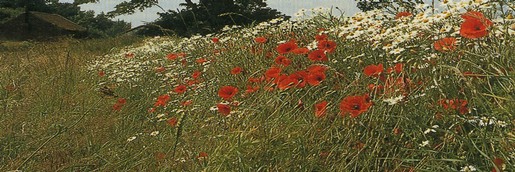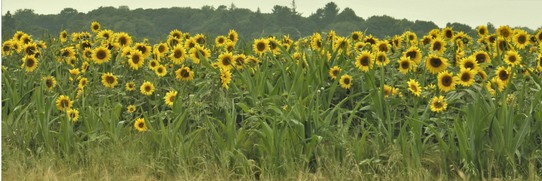

Biodiversity
Action
Plan
Causes of reduction of wildlife value of cereal crops
The wildlife value of cereal crops is reduced by:
- Intensification of cereal production - including the use of herbicides to produce a weed free monoculture, and the summer use of insecticides, both of which are a threat to biodiversity.
- Winter cropping - the loss of winter stubbles associated with the shift towards winter sown crops.
- Lack of rotational land covers - cereals not being produced in rotation with other land covers (such as grass leys and fallows) has had a negative impact on many species.
- Reduction in the undersown area - undersown cereal crops are important for overwintering sawflies, but their use has reduced in association with the switch to winter sown crops.
Campaign for the Farmed Environment which aims to help
farmers support the natural environment, whilst farming productively.
Legal protection
There is no specific legal protection for arable field margins supporting notable wildlife.
However, many such species which use farmland including arable fields and their margins are protected by law, eg from disturbance during nesting.
Under the Food and Environment Protection Act 1985 it is illegal to spray pesticides into hedge bases unless there is a specific label recommendation or off-label approval.
Under the current procedures for pesticide registration and review, some compounds have statutory label exemptions preventing their use on the outermost 6m wide strips of crops.
These restrictions are designed to prevent over-spraying of water courses and protect non-cropped habitats.
Links
RSPB Advice for farmers:
General including beetle banks, headlands,
Plantlife: Managing arable land
Buglife:
Advice on managing cereal crop margins
Defra / Natural England
Margins & blocks for arable plants
Cereal field margins –climate change
GWCT:
Conservation
There are opportunities in Barnsley for creating and maintaining additional arable field margins - as well as infield areas in arable fields - as positive conservation measures to help to support key farmland wildlife species.
Factors affecting benefits of arable field margins:
- Ploughing/cultivation up to the base of field boundaries.
- Lack of management of field margins. Grass field margins are retained by some farmers to act as buffers to arable fields but minimal management limits the potential benefits.
- Non-local provenance seed mixtures may out-compete any remnant semi-natural flower-rich grassland.
The Environmental Land Management schemes (ELMs) may promote new arable field margins as previous schemes have done. There are also payments available for Pollen and Nectar or Wild bird seed mixture land use.

Arable Field Margins Conservation
